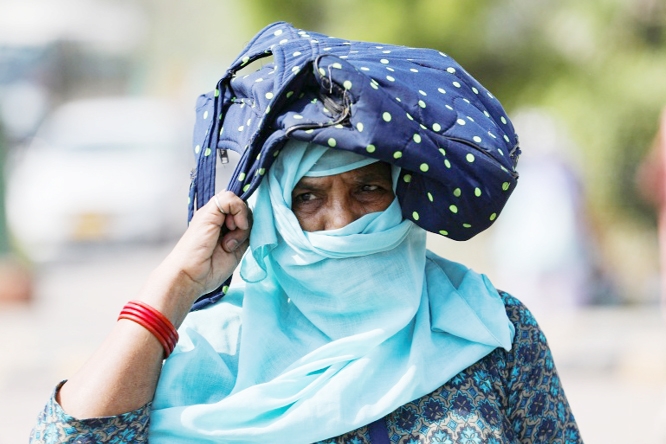
Al Jazeera :
The main summer months in India – April, May and June – are always excruciatingly hot in most parts of the country, before monsoon rains bring cooler temperatures. But the heatwave has arrived early and grown particularly intense in the past decade.
Heatwaves had killed more than 6,500 people in India since 2010, and scientists say climate change is making them harsher and more frequent across South Asia. “This is the first time I have seen such horrible weather in April. Usually, we’re prepared for this in May and onwards,” said 30-year-old Somya Mehra, as she and her family thirstily searched for cold drinks in New Delhi.
In the capital, temperatures have soared past 40C (104F) for several days and are forecast to linger around 44C until Sunday, with peak summer heat still to come.
India’s weather department on Friday warned of “severe heat wave conditions” in the northern, northwestern and eastern areas of the country as the vast nation continues to reel under what local media reports said was its “hottest summer ever”.
As extreme heat continued to scorch large swaths of India, offering no reprieve after its hottest March on record, it triggered a warning by Prime Minister Narendra Modi of fire risks.
“Temperatures are rising rapidly in the country, and rising much earlier than usual,” Modi told the heads of India’s state governments in an online conference on Wednesday.
As Modi spoke, firefighters were struggling to extinguish a large blaze at the Bhalswa landfill site, a hillock rising above the northwest edge of New Delhi. “We are seeing increasing incidents of fires in various places – in jungles, important buildings and in hospitals – in the past few days,” Modi said.
A firefighter uses his mobile phone as he sits on a fire truck as smoke billows from burning garbage at the Bhalswa landfill site in New Delhi [Adnan Abidi/Reuters]
Among the worst hit have been the typically humid eastern Indian states, which saw temperatures above 43C on Wednesday.
Schools in the eastern state of Odisha have been shut for a week while neighbouring West Bengal has announced summer school breaks from next week, days ahead of schedule.
Maximum temperatures recorded in six West Bengal districts were at least five degrees Celsius above normal, officials said, with a lack of rain in state capital Kolkata adding to its worries.
“Rarely it happens that nearly the whole country … is reeling under (a) heatwave,” said hydroclimatologist Arpita Mondal at the Indian Institute of Technology Bombay, on the coast of Maharashtra, where she said the heat was “unbearable”.
Climate change is “beyond doubt” a contributing factor to the weather extremes, Mondal said.
In February, a report by the Intergovernmental Panel on Climate Change warned of India’s vulnerabilities to extreme heat. For example, at 1.5C of warming above pre-industrial temperatures, the West Bengal capital of Kolkata could once a year see conditions match that of the 2015 heatwave, when temperatures hit 44C and thousands died across the country.

